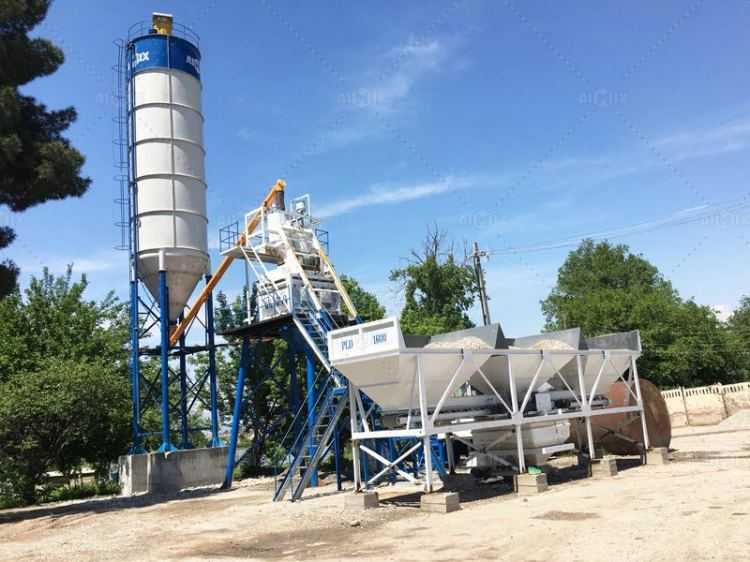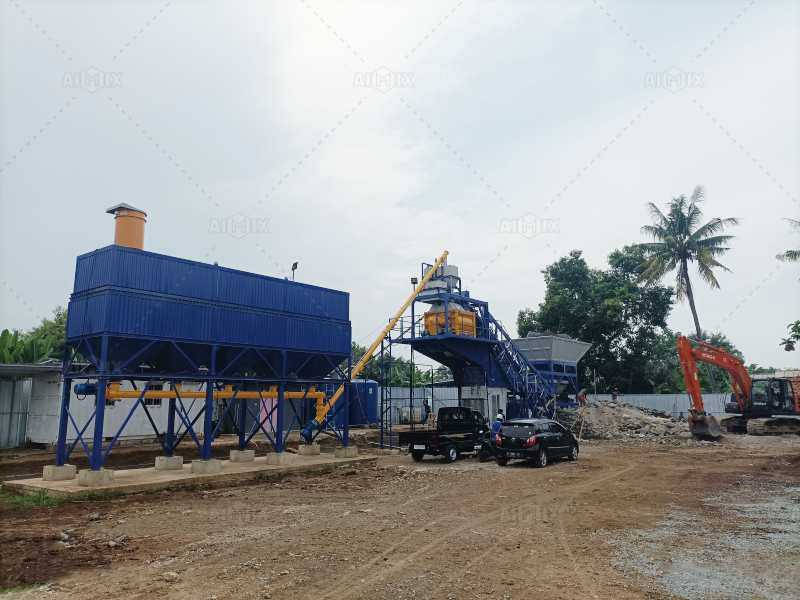The construction industry is rapidly evolving, with automation playing a pivotal role in transforming operations across the board. Small concrete batching plants, traditionally valued for their compactness and flexibility, are now undergoing a technological revolution driven by automation. These advancements not only boost efficiency and consistency but also help small-scale operators compete with larger plants.
This article explores the key automation trends shaping the future of small concrete batching plant, highlighting how these innovations impact production quality, operational costs, and industry competitiveness.

1. The Growing Need for Automation in Small Concrete Batching Plants
Small concrete batching plants serve contractors working on urban projects, remote locations, or smaller developments where large-scale plants aren’t practical. While these plants prioritize portability and ease of use, they have often relied on manual processes or semi-automatic controls.
However, as construction deadlines tighten and quality standards rise, small plant operators face pressure to increase precision, reduce human error, and optimize resource usage. Automation emerges as the solution to meet these challenges without sacrificing the inherent advantages of small batching plants.
2. Key Automation Technologies Transforming Small Concrete Batching Plants
a. Programmable Logic Controllers (PLCs)
PLCs are central to modern batching plant automation. They control batching sequences, material weighing, mixing times, and system diagnostics. By replacing manual switches and levers with programmable software, PLCs ensure repeatable, accurate batching cycles.
Benefits: Reduced batching errors, consistent concrete quality, easier troubleshooting
Impact: Increased productivity and minimized material waste
b. Human-Machine Interfaces (HMIs)
HMIs provide operators with intuitive touchscreens to monitor and control the batching process. They display real-time data such as batch weight, water-cement ratio, and mixing duration.
Benefits: Simplified operation, instant feedback, easy recipe adjustments
Impact: Lower training requirements and faster response to operational issues
c. Automated Weighing Systems
Automated load cells and sensors weigh aggregates, cement, water, and additives precisely during batching. This accuracy improves mix consistency and reduces overuse of materials.
Benefits: Improved mix quality, reduced material costs, compliance with standards
Impact: Enhanced customer satisfaction and regulatory adherence
d. Remote Monitoring and Control
With advances in IoT (Internet of Things), many small concrete batching plants now feature remote monitoring capabilities. Plant operators can oversee operations, receive alerts, and adjust settings from smartphones or computers.
Benefits: Reduced onsite supervision, faster issue resolution, data-driven management
Impact: Lower labor costs and increased operational flexibility

3. Automation Benefits Tailored for Small Plants
Automation brings several specific advantages to small concrete batching plants:
Consistency and Quality
Automated systems reduce human error, ensuring every batch meets design specifications. This consistency is vital in maintaining client trust and meeting building codes.
Increased Efficiency
Automated batching sequences shorten cycle times, enabling higher output without increasing labor. Small plants can thus handle bigger projects or tighter schedules effectively.
Cost Savings
Although automation adds to initial investment, it cuts down material waste and reduces manual labor, generating long-term savings.
Data Collection and Reporting
Automated plants collect detailed production data useful for quality control, maintenance planning, and performance analysis. Such insights were previously unavailable in small-scale operations.
4. Trends Driving Automation Adoption in Small Concrete Batching Plants
Integration with Mobile Technology
Mobile apps linked to batching plants enable operators and managers to interact with the plant remotely. This capability is especially valuable for small operators managing multiple sites.
Modular Automation Solutions
Suppliers now offer modular automation packages that can be added to existing small batching plants. This flexibility allows buyers to upgrade gradually according to budget and operational needs.
AI and Predictive Maintenance
Emerging AI tools analyze plant data to predict equipment failures or optimize batching parameters. Although currently more common in large ready mix batching plants, these technologies are gradually reaching smaller units.
Green and Energy-Efficient Automation
Automation is also linked to energy-saving strategies, such as optimizing motor usage and managing water consumption, aligning small plants with sustainable construction trends.
5. Challenges and Considerations
While automation promises many benefits, small concrete batching plant operators must consider:
Initial Costs: Automation increases upfront expenses, which may challenge budget-constrained buyers. However, modular upgrades can ease financial pressure.
Training Needs: Operators require training to use automated systems effectively, though user-friendly HMIs mitigate this issue.
Maintenance: Automated components need regular servicing to maintain reliability, which requires access to skilled technicians.
Customization: Plants must balance automation levels with operational simplicity, avoiding overcomplication that negates small plant advantages.

6. The Future Outlook
The future of small concrete batching plants is clearly intertwined with automation. As technology becomes more affordable and accessible, even the smallest plants will integrate advanced controls, data analytics, and connectivity features.
This shift will enable small operators to deliver concrete with precision and speed comparable to large-scale facilities, unlocking new markets and enhancing competitiveness.
Conclusion
Automation is no longer a luxury reserved for large concrete batching plants. Small concrete batching plants are embracing automation trends to improve quality, reduce costs, and streamline operations. By adopting programmable controls, automated weighing, remote monitoring, and other innovations, small plants can meet modern construction demands while retaining their flexibility and portability.
For buyers and operators, understanding these automation trends is crucial to selecting the right small concrete batching plant that balances technology with practical needs—paving the way for smarter, more efficient concrete production in the years ahead.







